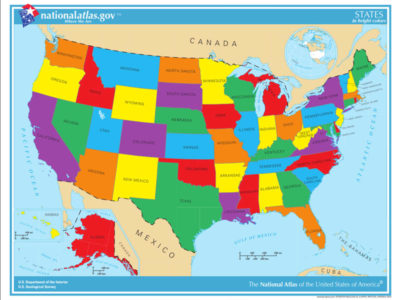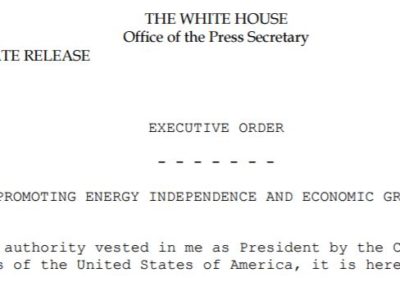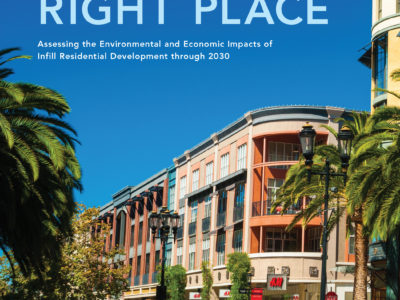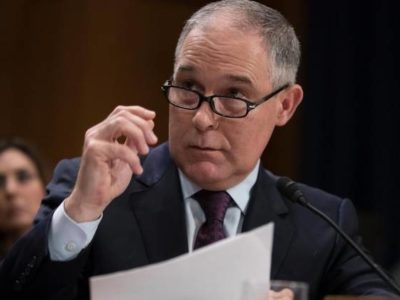Climate Change
Guest Blogger Ben Levitan: The Tenth Anniversary of Massachusetts v. EPA
The opinion stands for EPA’s responsibility to address climate change based on law and science, and to safeguard public health and the environment under adverse political conditions
If it feels like we’re being inundated with bad news about federal climate policy, here’s a cause for hope: this month marks the tenth anniversary of the Supreme Court’s decision in Massachusetts v. EPA, one of the most important environmental cases in our nation’s history. The Supreme Court’s landmark decision in Massachusetts came when the …
Continue reading “Guest Blogger Ben Levitan: The Tenth Anniversary of Massachusetts v. EPA”
CONTINUE READINGShould the Feds Leave Regulation to the States?
The more we’ve learned about environmental problems, the less they seem purely local.
Voices in and out of the Trump Administration have called for a shift responsibility for environmental protection to the states. Given that none of them has ever shown enthusiasm for state environmental protection, it’s possible whether their rule concern is federalism or deregulation. (In fact, as NYU’s Ricky Revesz points out, Pruitt has generally opposed …
Continue reading “Should the Feds Leave Regulation to the States?”
CONTINUE READINGTrump’s Executive Order: Bad Policy and More Uncertainty
President Trump’s Executive Order on climate policy is an invitation to bad policymaking and legal uncertainty. The big-ticket item targeted by the Order, of course, is the Obama Administration’s Clean Power Plan and related rules on carbon dioxide emissions from power plants. The EO has limited immediate legal impact: none of the major rules can …
Continue reading “Trump’s Executive Order: Bad Policy and More Uncertainty”
CONTINUE READINGSome Resources for Non-Experts (and for Experts Too!) on the Executive Order Rolling Back Federal Climate Change Regulations
Cutting Through the Information Overload
The President’s Executive Order rolling back climate change-related initiatives, “Promoting Energy Independence and Economic Growth,” just came out today, and there’s already plenty of analysis to help people to understand its likely impact. While the short answer is that it is terrible for our country, the long answers tend to make people’s eyes glaze over if …
CONTINUE READINGTrump’s Frontal Assault on Climate Policy
The true victims aren’t you and me. It’s our descendants who will pay the price, long after Trump is gone.
We live in a time of contrasts. Yesterday, scientists reported more evidence that climate change will intensify heat waves and droughts in temperate zones through changes in the jet stream. Today, however, the Trump Administration initiated the process of eliminating federal climate policies. In a pointed insult to EPA staff who have worked long and …
Continue reading “Trump’s Frontal Assault on Climate Policy”
CONTINUE READINGWhere Should We Build New Housing In California To Meet 2030 Climate Goals?
New Report From UC Berkeley’s CLEE and Terner Center, Commissioned by Next 10, Released Today
California isn’t building enough housing to meet population growth, while the new housing that does get built is happening too often in the wrong places, like on open space far from jobs. Meanwhile, new climate legislation for 2030 will likely rely on the average Californian reducing his or her driving miles by allowing residents to …
Continue reading “Where Should We Build New Housing In California To Meet 2030 Climate Goals?”
CONTINUE READINGIf Trump Guts Key Programs, Does Staying in Paris Even Matter?
Administration to Issue Executive Order to Pull the Clean Power Plan
(This post is cross-listed at takecareblog.com) Today the Trump Administration is expected – via Executive Order – to announce that it will begin the process to rescind the Clean Power Plan. The Order apparently says nothing about whether the U.S. will remain in the Paris Agreement. For months, speculation about whether the U.S. will withdraw …
Continue reading “If Trump Guts Key Programs, Does Staying in Paris Even Matter?”
CONTINUE READINGThe Future Of Energy In 2030
Register now for the California State Bar Environmental Law Conference in Los Angeles on April 12th
How we generate, distribute and use electricity is key to meeting California’s environmental and greenhouse gas reduction goals. We need to be much more efficient with the electricity we use, while ensuring that it comes from greenhouse gas-free sources, like solar, wind, and geothermal, coupled with energy storage technologies. We also will need to electrify …
Continue reading “The Future Of Energy In 2030”
CONTINUE READINGClimate Change is the new He-Who-Must-Not-Be-Named
And Scott Pruitt is the new High Inquisitor at EPA
Last week, after saying that he did not believe that carbon dioxide is the primary cause of climate change, EPA Administrator Scott Pruitt reminded me for the second time since he took office of someone I met at age fifteen: Dolores Umbridge. Yes, that Dolores Umbridge, the one that functions as the main villain of the …
Continue reading “Climate Change is the new He-Who-Must-Not-Be-Named”
CONTINUE READINGThe Trump Administration’s False Stories About the Environmental Protection Agency Are Meant to Take the Agency Down
Donald Trump and Scott Pruitt Distort the Facts About EPA’s Mission, History, and Success
The Trump Administration has made clear its plans to systematically dismantle the Environmental Protection Agency. Destroying the EPA will be a key element of the administration’s fight, in the words of White House policy advisor Steve Bannon, to achieve the “deconstruction of the administrative state.” [Update 8/22/17: Bannon is out, but that doesn’t change the Administration’s …
CONTINUE READING










